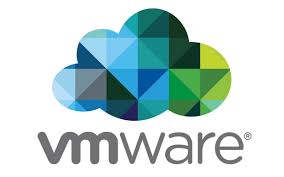VMWARE VSPHERE: FAST TRACK (VSPHERE FT)
Course Overview
The VMware vSphere Fast Track [V6.5] extended hours, five-day course features intensive, hands-on training that focuses on installing, configuring, managing, and troubleshooting VMware vSphere 6.5, which includes VMware ESXi 6.5 and VMware vCenter Server 6.5. This course prepares you to administer a vSphere infrastructure for an organization of any size. It is the foundation for most other VMware technologies in the software-defined data center.
The material is presented in the Fast Track format. Completion of this course satisfies the prerequisite for taking the VMware Certified Professional 6 – Data Center Virtualization (VCP6-DCV) exam.

Course Objectives
- Describe the software-defined data center
- Explain the vSphere components and their function in the infrastructure
- Deploy an ESXi host
- Deploy VMware vCenter Server Appliance
- Use a local content library as an ISO store and deploy a virtual machine
- Describe vCenter Server architecture
- Use vCenter Server to manage an ESXi host
- Configure and manage vSphere infrastructure with VMware Host Client and VMware vSphere Web Client
- Troubleshoot vSphere environments with VMware vSphere Management Assistant and command-line commands
- Describe virtual networks with vSphere standard switches
- Configure standard switch policies
- Troubleshoot virtual networks
- Use vCenter Server to manage various types of host storage: VMware vSphere VMFS, NFS, iSCSI, and RDM
- Examine the features and functions of Fibre Channel and VMware vSAN
- Manage virtual machines, templates, clones, and snapshots
- Create, clone, and deploy a vApp
- Describe and use the content library
- Migrate virtual machines with VMware vSphere vMotion
- Troubleshoot virtual machines
- Use VMware vSphere Storage vMotion to migrate virtual machine storage
- Troubleshoot vSphere storage
- Monitor resource usage and manage resource pools
- Use esxtop to identify and solve performance issues
- Troubleshoot ESXi hosts and vCenter Server
- Discuss the VMware vSphere High Availability cluster architecture
- Configure vSphere HA
- Manage vSphere HA and VMware vSphere Fault Tolerance
- Troubleshoot vSphere HA
- Use VMware vSphere Replication and VMware vSphere Data Protection to replicate virtual machines and perform data recovery
- Use VMware vSphere Distributed Resource Scheduler clusters to improve host scalability
- Troubleshoot vSphere DRS clusters
- Use VMware vSphere Update Manager to apply patches and perform basic troubleshooting of ESXi hosts, virtual machines, and vCenter Server operations
Course Prequisites
System administration experience on Microsoft Windows or Linux operating systems
Target Audience
New and experienced system administrators, systems engineers, and system integrators willing to work hard to achieve superior vSphere skills with minimal time away from the office.
Course Outline
Module 1: Course Introduction
- Introductions and course logistics
- Course objectives
- Describe the content of this course
- Gain a complete picture of the VMware certification system
- Familiarize yourself with the benefits of the VMware Education Learning Zone
- Identify additional resources
Module 2: Introduction to vSphere and the Software-Defined Data Center
- Describe the topology of a physical data center
- Explain the vSphere virtual infrastructure
- Define the files and components of virtual machines
- Describe the benefits of using virtual machines
- Explain the similarities and differences between physical architectures and virtual architectures
- Define the purpose of ESXi
- Define the purpose of vCenter Server
- Explain the software-defined data center
- Describe private, public, and hybrid clouds
Module 3: Creating Virtual Machines
- Introduce virtual machines, virtual machine hardware, and virtual machine files
- Identify the files that make up a virtual machine
- Discuss the latest virtual machine hardware and its features
- Describe virtual machine CPU, memory, disk, and network resource usage
- Explain the importance of VMware Tools
- Discuss PCI pass-through, Direct I/O, remote direct memory access, and NVMe
- Deploy and configure virtual machines and templates
- Identify the virtual machine disk format
Module 4: Creating Virtual Machines
- Introduce the vCenter Server architecture
- Deploy and configure vCenter Server Appliance
- Use vSphere Web Client
- Back up and restore vCenter Server
- Examine vCenter Server permissions and roles
- Explain the vSphere HA architectures and features
- Examine the new vSphere authentication proxy
- Manage vCenter Server inventory objects and licenses
- Access and navigate the new vSphere clients
Module 5: Troubleshooting vSphere
- Use command-line commands with vSphere
- Use vSphere Management Assistant
- Describe the troubleshooting methodology for vSphere
- Identify the location of vSphere log files
Module 6: Configuring and Managing Virtual Networks
- Describe, create, and manage standard switches
- Configure virtual switch security and load balancing policies
- Compare and contrast vSphere distributed switches and standard switches
- Describe the virtual switch connection types
- Describe the new TCP/IP stack architecture
- Use VLANs with standard switches
- Troubleshoot networks
Module 7: Configuring and Managing Virtual Storage
- Identify storage protocols and storage device types
- Discuss ESXi hosts using iSCSI, NFS, and Fibre Channel storage
- Create and manage VMFS and NFS datastores
- Describe the new features of VMFS6.5
- Describe guest file encryption
- Describe storage connectivity and configuration
- Describe storage multipathing
- Discuss the use of vSAN and VMware vSphere Virtual Volumes
Module 8: Virtual Machine Management
- Use templates and cloning to deploy new virtual machines
- Modify and manage virtual machines
- Clone a virtual machine
- Upgrade virtual machine hardware to version 13
- Remove virtual machines from the vCenter Server inventory and datastore
- Customize a new virtual machine using customization specification files
- Perform vSphere vMotion and vSphere Storage vMotion migrations
- Create and manage virtual machine snapshots
- Create, clone, and export vApps
- Identify the types of content libraries and how to deploy and use them
Module 9: Resource Management and Monitoring
- Explain virtual CPU and memory concepts
- Explain virtual memory reclamation techniques
- Describe virtual machine overcommitment and resource competition
- Configure and manage resource pools
- Describe methods for optimizing CPU and memory usage
- Use various tools to monitor resource usage
- Create and use alarms to report certain conditions or events
- Describe and deploy resource pools
- Set reservations, limits, and shares
- Describe expandable reservations
- Schedule changes to resource settings
- Create, clone, and export vApps
- Use vCenter Server performance charts and esxtop to analyze vSphere performance
- Troubleshoot vCenter Server and ESXi hosts
Module 10: vSphere HA, vSphere Fault Tolerance, and Protecting Data
- Explain the vSphere HA architecture
- Configure and manage a vSphere HA cluster
- Use vSphere HA advanced parameters
- Define cluster wide restart ordering capabilities
- Enforce infrastructural or intra-app dependencies during failover
- Describe vSphere HA heartbeat networks and datastore heartbeats
- Introduce vSphere Fault Tolerance
- Enable vSphere Fault Tolerance on virtual machines
- Support vSphere Fault Tolerance interoperability with vSAN
- Examine enhanced consolidation of vSphere Fault Tolerance virtual machines
- Introduce vSphere Replication
- Use vSphere Data Protection to back up and restore data
- Troubleshoot vSphere HA
Module 11: vSphere DRS
- Describe the functions and benefits of a vSphere DRS cluster
- Configure and manage a vSphere DRS cluster
- Work with affinity and anti-affinity rules
- Describe the new capabilities for what-if analysis and Predictive DRS
- Describe the evolution of vSphere DRS using predictive data from VMware vRealize Operations Manager
- Perform preemptive actions to prepare for CPU or memory changes
- Describe the vCenter Server embedded vSphere Update Manager, VMware vSphere ESXi Image Builder CLI, and VMware vSphere Auto Deploy capabilities
- Use vSphere HA and vSphere DRS together for business continuity
- Troubleshoot vSphere DRS
Module 12: vSphere Update Manager
- Describe the new vSphere Update Manager architecture, components, and capabilities
- Use vSphere Update Manager to manage the patching of ESXi, virtual machines, and vApps
- Install vSphere Update Manager and the vSphere Update Manager plug-in
- Create patch baselines
- Use host profiles to manage host configuration compliance
- Scan and remediate hosts
What Our Students Have to Say


